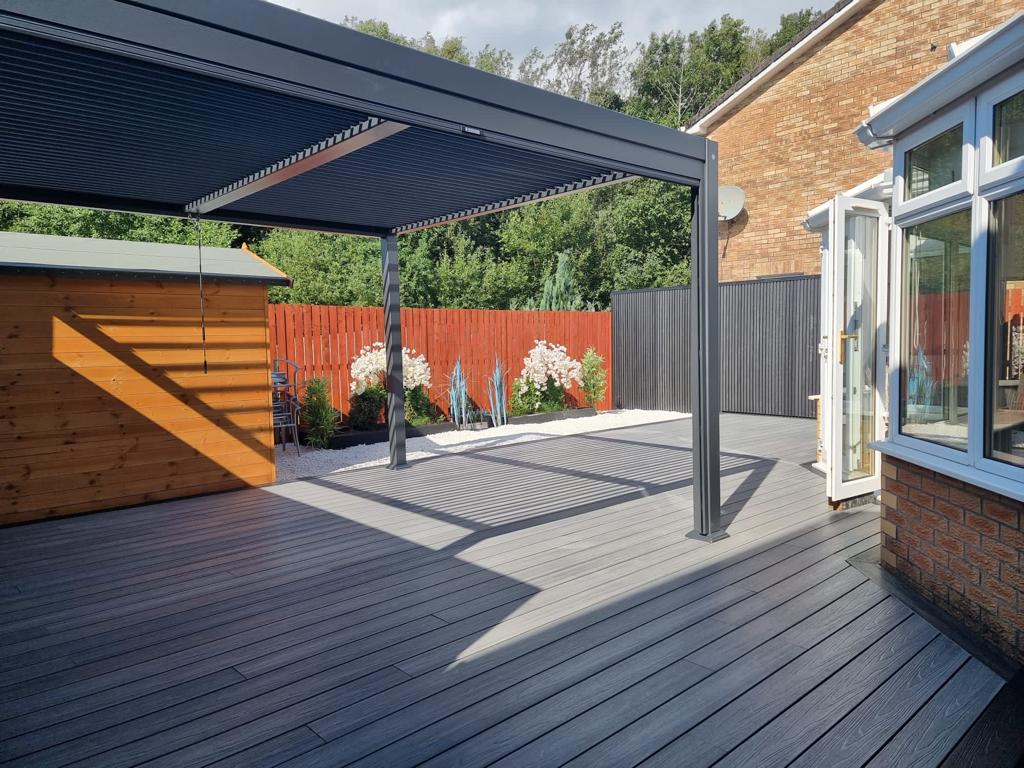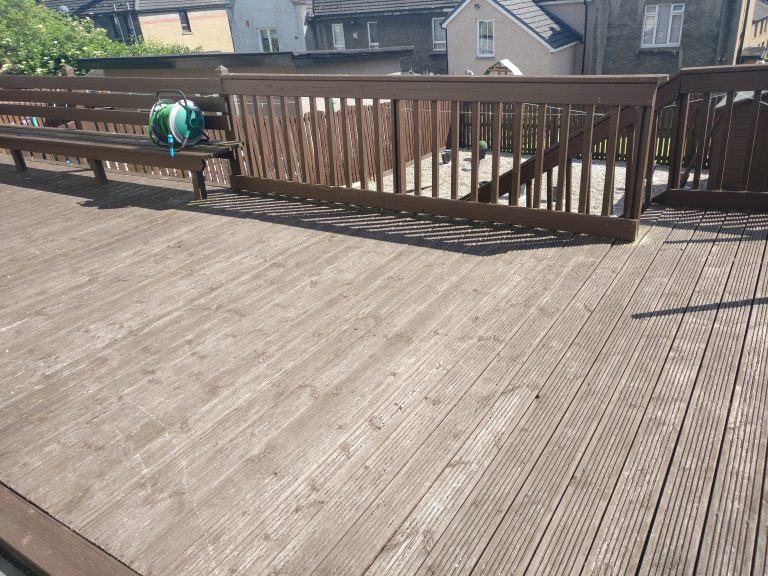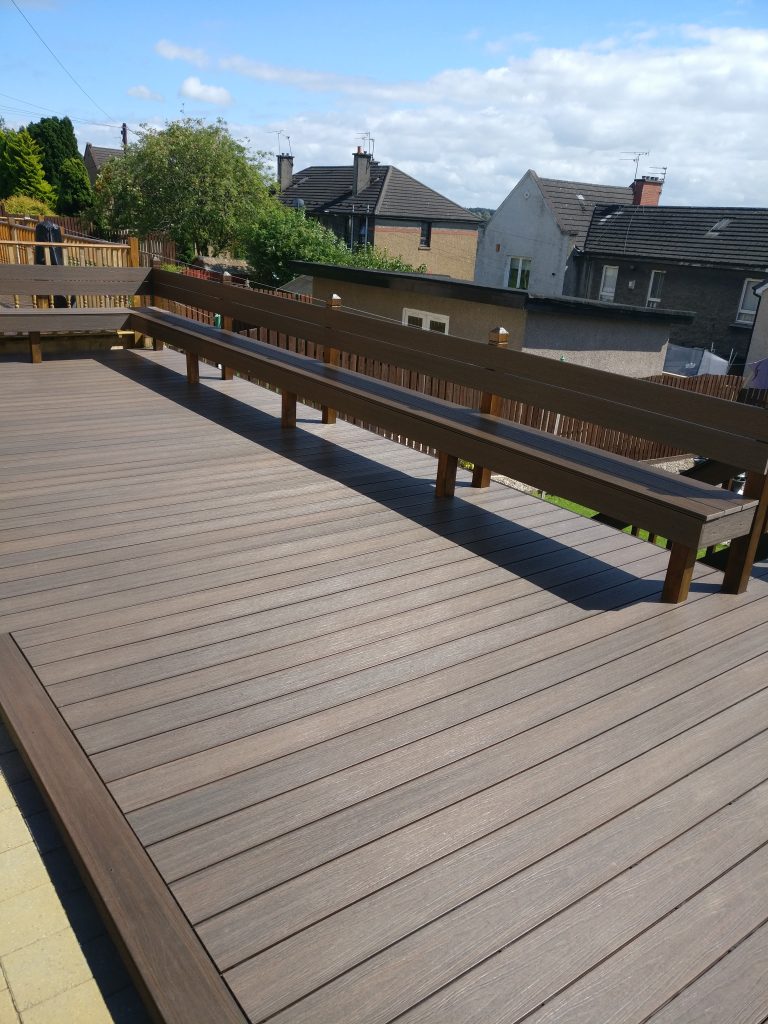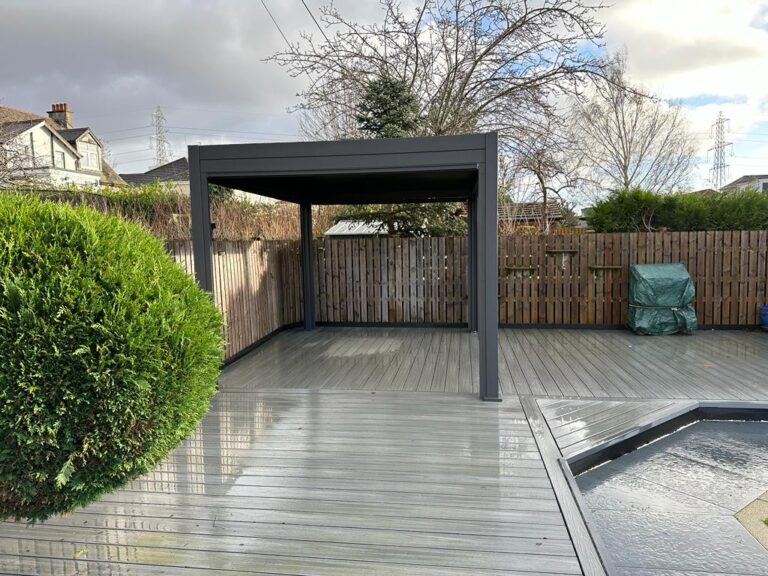Composite decking has become a popular choice for outdoor spaces, providing a durable and low-maintenance alternative to traditional wood decking. But can you lay composite decking on gravel? In this comprehensive guide, we will explore the steps and materials needed to lay composite decking on gravel, the alternatives to this method, potential risks, and how to maintain a composite deck on gravel.
Whether you’re considering a new deck installation or looking to upgrade an existing gravel surface, this article will provide you with the essential information to make an informed decision. So, let’s dive into the world of composite decking on gravel and discover the possibilities and considerations for this versatile outdoor flooring solution.
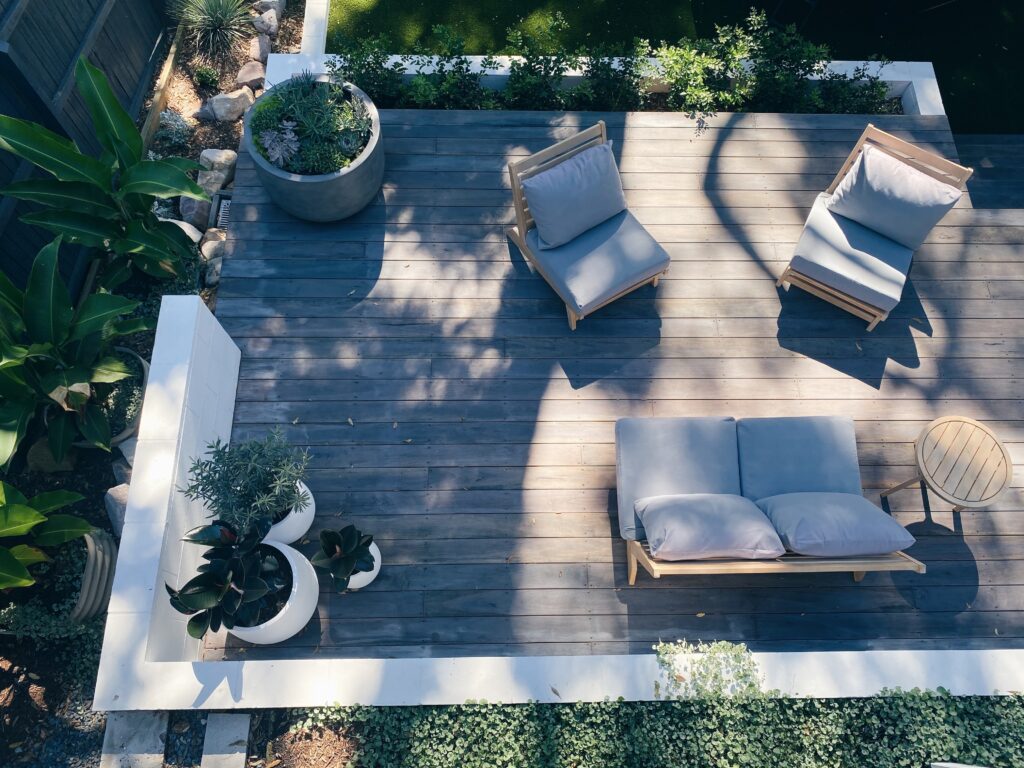
What is Composite Decking?
Composite decking is a modern alternative to traditional wooden decking, offering a durable and low-maintenance outdoor flooring solution for decks and other outdoor living spaces.
It is designed to withstand the elements and is resistant to rot, mould, and pests, making it an ideal choice for areas with fluctuating weather conditions. Its durability and long-lasting nature make it a cost-effective option, requiring minimal upkeep compared to wooden decking.
Composite decking is available in a variety of colours and finishes, allowing homeowners to customise their outdoor spaces to suit their preferences and design aesthetic. Its versatility and ease of installation make it a popular choice for both residential and commercial outdoor projects.
What Are The Benefits Of Composite Decking?
The benefits of composite decking extend to its low maintenance requirements, exceptional durability, and its ability to enhance outdoor living spaces with long-lasting appeal.
Composite decking offers an array of advantages that make it a popular choice for outdoor settings. With minimal upkeep, it eliminates the need for regular staining, sealing, or painting, saving both time and effort. Its remarkable resistance to weather elements, such as moisture, UV rays, and mould, ensures that it retains its beauty and integrity over time. This durability translates to a longer lifespan, reducing the need for frequent replacement and providing a sustainable solution for outdoor areas.
Yes, you can lay composite decking on gravel.
Laying composite decking on gravel is a feasible DIY project that offers a practical solution for creating ground-level deck spaces with minimal preparation and installation effort.
It’s a great option for transforming outdoor areas, especially where traditional deck foundations or concrete patios are not possible. With some basic tools and materials, this approach allows homeowners to quickly enhance their outdoor living spaces. The key to success lies in ensuring a level and stable gravel base, followed by securely anchoring the deck frame and composite boards. This method can be cost-effective and time-saving, making it an attractive choice for those seeking a weekend DIY project.
What are the steps to lay composite decking on gravel?
Laying composite decking on gravel involves several key steps, starting with the preparation of the ground level and the installation of a suitable support system to ensure stability and longevity.
Once the ground is prepared, the next crucial step is to lay out a sturdy support system. This usually involves laying down joists or sleepers to create a stable foundation for the decking. Proper spacing and alignment of the support system are essential to evenly distribute the weight of the composite decking and prevent sagging or warping. Ensuring that the support system is securely anchored to the ground is vital for the overall durability of the deck.
What Materials Do You Need To Lay Composite Decking On Gravel?
The materials required to lay composite decking on gravel include the decking boards, a sturdy support framework, and essential tools for ground preparation and installation, ensuring a smooth and efficient process.
The decking boards, typically made of a durable composite material, form the visible surface of the deck and contribute to its aesthetic appeal and longevity. The sturdy support framework, such as joists and beams, provides the necessary structure to elevate the deck above the gravel, preventing direct contact and promoting air circulation to minimise moisture build-up.
Essential tools for ground preparation, such as a level, shovel, and landscape fabric, are crucial for smoothing the gravel surface and creating a stable base for the decking installation.
How do you prepare the gravel surface for composite decking?
Preparing the gravel surface for composite decking involves levelling the ground, compacting the gravel, and establishing a stable foundation at ground level to ensure the longevity and performance of the decking installation.
Levelling the ground is crucial to create a consistent surface, typically achieved by using a rake or a grading tool to remove any debris and achieve a uniform level. Compact the gravel by using a compactor or a hand tamper to ensure a firm and stable base. This will reduce the risk of settling and shifting over time.
Creating a stable foundation involves ensuring proper drainage by sloping the surface away from structures and using landscape fabric to prevent weed growth and maintain a solid ground level for the decking.
What Are The Alternatives To Laying Composite Decking On Gravel?
In addition to laying composite decking on gravel, alternative approaches include:
- Building a foundation with concrete piers, which provide a stable base for the deck as they are installed below the frost line to prevent shifting.
- Using deck blocks, which offer a convenient and cost-effective solution by providing support for the deck beams.
- Constructing a wooden deck frame to support the decking materials, which allows for flexibility in creating custom designs and can be tailored to the specific layout of the deck.
Each method has its advantages and considerations, and choosing the most suitable option depends on factors such as soil composition, climate, and local building codes.
Constructing a Base Using Concrete Piers
Constructing a foundation with concrete piers provides a stable and durable support system for composite decking, ensuring longevity and structural integrity for outdoor deck spaces.
This support system involves setting concrete piers deep into the ground, creating a solid base for the deck structure. By utilising concrete piers, the weight of the deck is distributed evenly, minimising the risk of settling or shifting. This method offers excellent protection against moisture, preventing potential damage to the composite decking material. It also allows for easier maintenance and upkeep of the deck, ensuring a beautiful outdoor space for years to come.
Using Deck Blocks
Utilising deck blocks offers a convenient and efficient support system for laying composite decking, providing a versatile solution for creating stable and level deck surfaces.
These blocks serve as a reliable alternative to traditional concrete footings, and their adjustable nature makes them suitable for various terrain types. By distributing the deck’s weight evenly across multiple blocks, they help prevent issues like sagging or uneven surfaces over time. Their design allows for easy adjustment and levelling, reducing the complexities of installation and providing a sturdy foundation for the composite decking. This makes them a popular choice for DIY enthusiasts and professionals alike, saving time and effort during the construction process.
Constructing a Wooden Deck Frame
Constructing a wooden deck frame presents a traditional yet effective approach to providing a robust support system for composite decking, offering flexibility and customisation for outdoor deck installations. By building a sturdy wooden frame, homeowners can ensure the proper weight-bearing capacity for their composite decking. This process involves strategically placing joists and beams to create a strong foundation that can withstand various weather conditions and heavy foot traffic. Using pressure-treated timber for the frame can enhance its durability and longevity, ultimately leading to a low-maintenance and reliable outdoor living space.
What are the risks of laying composite decking on gravel?
Whilst laying composite decking on gravel is feasible, it presents potential risks such as creating an uneven surface that may impact the stability and aesthetics of the deck installation.
The uneven nature of gravel can lead to gaps and inconsistencies in the decking, potentially compromising the structural integrity and creating tripping hazards. Proper ventilation and drainage may be compromised, leading to moisture retention, which can result in mould and mildew growth. It’s crucial to address these concerns by implementing suitable measures to ensure a secure and long-lasting decking installation on gravel surfaces.
Uneven Surface
An uneven surface can lead to movement and shifting of the composite decking, potentially compromising the structural integrity and long-term performance of the outdoor deck spaces.
This can result in an increased risk of slips, trips, and falls for individuals using the deck. The structural concerns associated with an uneven surface may lead to the decking material warping, cracking, or developing gaps, diminishing the aesthetic appeal and functionality of the outdoor space.
Correcting surface irregularities through proper levelling and installation techniques is essential to ensure a stable and secure composite decking surface that promotes safety and durability.
Potential for Movement and Shifting
The potential for movement and shifting in composite decking laid on gravel may impact drainage patterns and contribute to water accumulation, posing challenges for maintenance and longevity. This can result in the disruption of the intended slope, which is essential for efficient drainage. Excess water accumulation can lead to increased wear and tear on the decking materials, potentially shortening their lifespan. It’s crucial to address these concerns by considering proper installation techniques and potential reinforcements to mitigate the impact of movement on composite decking placed on gravel surfaces.
Drainage Issues
Drainage issues resulting from laying composite decking on gravel can affect the maintenance requirements and weather resistance of the deck, potentially leading to long-term durability concerns.
Improper drainage can cause water to accumulate, leading to moisture-related problems such as mould, mildew, and rot in composite decking. This can significantly increase the maintenance efforts needed to keep the deck in good condition, as well as compromise its ability to withstand harsh weather conditions.
Addressing drainage during the installation process and ensuring proper water runoff can mitigate these issues, contributing to the overall longevity and weather durability of the composite decking.
How to maintain a composite deck on gravel?
Maintaining a composite deck on gravel involves regular cleaning, addressing damages promptly, and implementing measures to protect against moisture and weather-related wear, ensuring the long-term durability of the outdoor deck space.
Regular cleaning is crucial to prevent debris buildup, which can lead to mould and mildew growth. Use a mild soap solution and a soft-bristle brush to scrub the surface gently. Promptly address any damages, such as scratches or cracks, by using manufacturer-recommended repair kits. Apply a quality sealant to protect the deck against moisture and harsh weather, ensuring its resilience. Consider using mats or rugs in high-traffic areas to minimise wear and tear from foot traffic and furniture. By following these maintenance practices, the composite deck can retain its pristine condition for years to come.
Regular Cleaning
Regular cleaning is essential for maintaining the appearance and performance of a composite deck on gravel, preserving the aesthetic appeal and functionality of the outdoor space.
It is vital to keep the composite decking on gravel clean to prevent the accumulation of debris, moss, and mildew, which can compromise its structural integrity. Regular maintenance helps in preventing the growth of weeds and plants that could damage the deck’s surface.
By incorporating a cleaning routine into your outdoor living habits, you can extend the lifespan of your composite decking and ensure a welcoming and enjoyable environment for gatherings and relaxation.
Repairing Damages
Addressing damages promptly is crucial for preserving the structural integrity and appearance of a composite deck on gravel, minimising long-term maintenance requirements and ensuring continued durability.
Taking swift action to repair any damages to your composite decking on gravel can prevent small issues from escalating into larger, more costly problems. By promptly addressing any cracks, scratches, or other damages, you can maintain the overall structural integrity of the deck and prevent potential safety hazards. Attending to these damages promptly can help in minimising the long-term maintenance efforts and costs, as minor repairs are usually simpler and less expensive than dealing with extensive damage or decay. This proactive approach can contribute significantly to the overall longevity and durability of the composite deck, ensuring it continues to enhance your outdoor space for years to come.
Protecting Against Moisture
Implementing measures to protect composite decking against moisture is essential for preserving its weather resistance, maintaining the outdoor living space, and ensuring long-term durability in gravel-based installations.
By incorporating appropriate waterproof barriers between the gravel and decking, you can prevent moisture from seeping into the composite material. Regular inspection and maintenance play a crucial role in identifying and addressing any moisture-related issues promptly.
Choosing high-quality composite decking with built-in moisture resistance features also contributes to the long-term durability of the outdoor living space. These strategies collectively safeguard the decking from moisture damage, preserving its aesthetic appeal and structural integrity over time.

